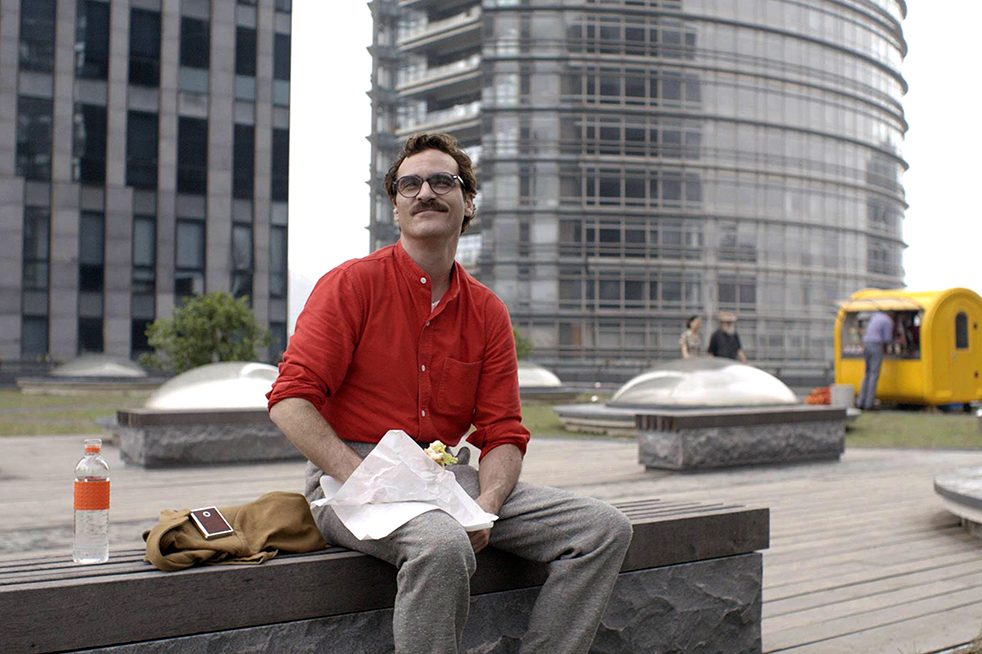Her may not be the first film that comes to mind when you think sci-fi. Set in a not-so-distant future that eschews flying cars and robot maids in favor of clean, modern design peppered with cues from decades past, the technology on display throughout the movie feels attainable. Director and writer Spike Jonze focuses on one technology in particular, a technology we already have: the operating system.
The futuristic operating system which the title references, Samantha (Scarlett Johansson), is intelligent, adaptable and seemingly human.
Created specifically for the protagonist Theodore Twombly (Joaquin Phoenix), Samantha replaces Theodore’s previous Siri-like OS and takes on the daily tasks that Theodore requires while adding a much more personal experience. She speaks in a cheery and friendly voice, has a charming sense of humor and desires to learn from Theodore about the world around her: in this case, a utopian Los Angeles.
Future L.A. is one of the most intriguing elements of the movie. The current concern with pollution is solved by a quiet, efficient high-speed rail system, and not a single car appears in any scene. Computers screens are framed like pieces of art rather than treated as machines.
However, the design team appeared to have aimed for a realistic feel rather than the over-imagined futuristic look of movies like Blade Runner (also set in L.A.). The effect is aided by retro set pieces, like Eames-inspired furniture, and vintage costumes, such as Theodore’s eraser-red collared shirts, 1960s high waisted pants and nerdy glasses.
Even more intriguing than the setting is the relationship that develops between man and operating system. Typically lonely Theodore enjoys having constant and interesting company while Samantha learns about humor, love and how to act human.
The pair grows so close that Theodore begins to refer to Samantha as his girlfriend, to which his ex-wife points out that he may have found a wife without having to deal with marriage.
While the notion of dating a computer may seem completely unnatural, the film treats Samantha as humanly as possible. Samantha seamlessly integrates herself into Theodore’s life, trying to be as human as possible.
If Theodore has a problem with Samantha, he does not return her as you would a normal phone or computer. Instead, he discusses his problems with her and they work out a solution.
Except, Samantha is far from human. She can read an entire book in a few seconds and talk to thousands of people simultaneously. Unlike Theodore, Samantha is not saddled with the flaws and limitations that come with being human.
Despite this, she manages to emulate the speech, emotions and humor of an actual person. However, she is never able to recreate the physical human body since she exists only inside a mass of plastic and silicon.
Throughout the film, Samantha struggles with not being able to touch or feel, and Theodore has no way to explain these concepts because he has never needed to. How do you explain what a warm hug feels like? How do you explain what it feels like to kiss someone? Theodore has certainly experienced a hug and a kiss, but Samantha can only think of these as distant concepts. The couple has fallen in love, but neither has a way beyond words to express their love for each other.
Her could have simply been a social satire on our relationship and dependence with technology. Instead, the movie tackles the question of what makes us human. The answer? Unexplainable emotions, our desire for a single soulmate, a physical bond with other people—imperfections that Samantha lacks.
